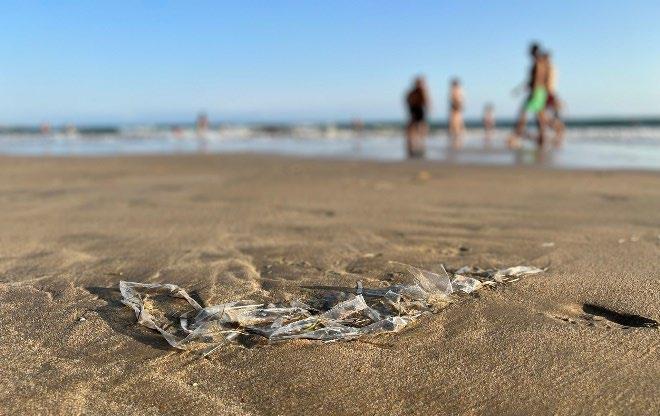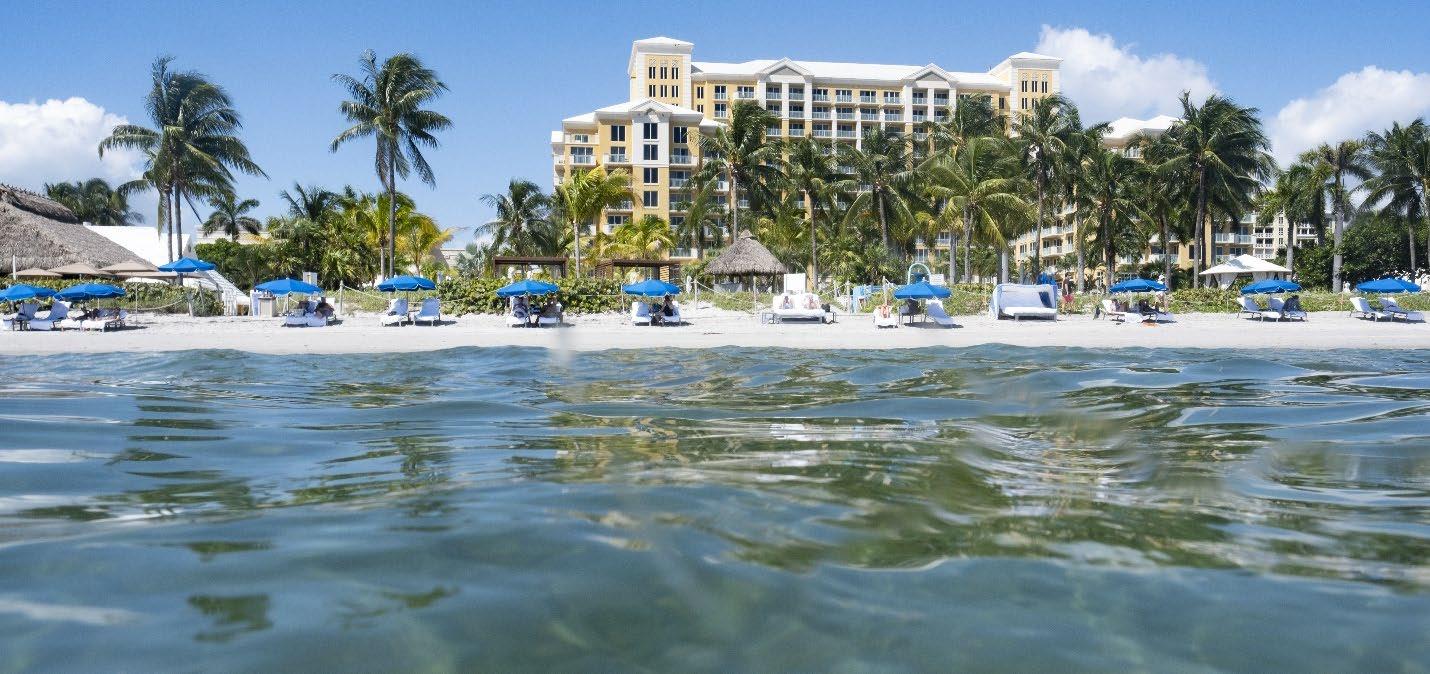
3 minute read
Executive Summary
Plastic pollution poses a significant threat to our planet, with the hotel and tourism industry playing a crucial role in combating this global issue. The industry's extensive use of single-use plastic, coupled with its proximity to coastal areas, contributes to the vast amounts of plastic waste that end up in our oceans and beaches.
Marine plastic pollution not only harms the environment but also poses a growing threat to the tourism industry itself. Pristine beaches are an attraction for tourists, but the presence of plastic pollution compromises the appeal of these destinations and it impacts local authorities' ability to maintain clean beaches.
To shed light on the relationship between tourism and plastic pollution on the seafloor, expeditions were conducted in renowned tourist destinations, including Copacabana and Ipanema beaches in Rio de Janeiro, Cancun and Playa del Carmen in Mexico, Mallorca and Valencia in Spain, and the Florida Keys in the United States All of these beaches are in close proximity to marine areas characterized by rich biodiversity.
By conducting the surveys, we evaluated the extent of plastic pollution near these popular tourism destinations and its consequences on marine ecosystems. Our research not only confirmed the presence of plastic pollution but also that the excessive use of plastics is directly impacting delicate underwater habitats and the species that live in them.
All areas surveyed were found to be polluted with plastic. Across all five expeditions, we found a total of 1,653 waste items, with 1,171 (70.8%) made from plastic. We calculated a concentration of plastic items ranging from 324 to 852 pieces of plastic/km2 of seafloor surveyed. Most of the plastic appeared to be single-use, such as bags, food wrappers, packaging, cutlery and drinking containersitems typically used by tourism-related businesses. These results add urgency to the need for plastic-free coastal regions, restaurants, and tourist resorts, and for significant reductions in the production of single-use plastics.
The dire state of our oceans becomes evident when we consider that an estimated 15 million tons of plastic enters the ocean every year. This has a devastating impact on marine life, with over 900 documented cases of species ingesting or becoming entangled in plastic. Furthermore, the consequences extend beyond wildlife, as plastic waste contaminates our food supply. Microplastics, which form as larger plastic items break down, attract and retain harmful chemical pollutants that infiltrate our food, water, and even the air we breathe.
To tackle the problem at its source, hotels must adopt best practices to minimize single-use plastic waste. Oceana’s recommendations for the sector include providing refillable bottles and cups in guest rooms, promoting the use of reusable water bottles and coffee mugs, eliminating single-use items like straws and cutlery, and implementing refillable dispensers for toiletries. Proper recycling and disposal methods should also be emphasized for plastic waste that cannot be eliminated.
The onus is on hotels and the tourism industry to take proactive measures in reducing their plastic waste impact. By implementing these best practices, hotels can lead the way in preserving our oceans, inspiring guests to adopt sustainable habits, and protecting the fragile ecosystems that are essential to the tourism industry's success.
Much of our planet is swimming in discarded plastic and the global hotel and tourism industry has a key role to play in addressing the issue. Since most of the plastic used in the tourism industry is made to be thrown away, and with hotels often located directly at the seafront, the industry is responsible for large amounts of single-use plastic reaching beaches and the oceans.
At the same time, ocean plastic pollution is an increasing threat to the global tourism industry. According to recent estimates, coastal and marine tourism constitute approximately 50% of all global tourism. 1 Since holiday makers are sensitive to beaches being polluted with plastic and with many local authorities lacking the adequate infrastructure to keep up with plastic pollution, this tourism is heavily impacted as pristine areas are overwhelmed by plastic trash. To make matters worse, the plastic pollution collected on beaches barely hints at the magnitude of what lies hidden at the bottom of the sea. The bulk of the plastic pollution can be found below the surface. It is estimated that only 1% of plastics are in surface waters, 5% wash up on the beach and the remaining 94% ends up on the seafloor. 2 Plastic polluting the seafloor can be deadly to marine life and disrupts marine ecosystems for decades, if not centuries, as it slowly degrades.
To better understand the problem of plastic on the seafloor and its relationship to coastal tourism, Oceana documented seafloor plastic with an underwater drone during five expeditions off the coast of some of the world’s most famous beaches: the Copacabana and Ipanema beaches in Rio de Janeiro, Brazil; Cancun and Playa del Carmen in Mexico; the island of Mallorca and the Valencia seaside in Spain; and the Florida Keys in the United States. These beaches are also all located adjacent to marine areas that are highly biodiverse. Through these surveys, we assessed how much plastic pollution is on the seafloor close to these popular tourism destinations, and how it is impacting marine ecosystems.
Our research helped us confirm that plastic pollution is both present and is negatively impacting diverse marine ecosystems in popular tourist areas Given these findings, at the end of this report we have provided best practice guidance to hotels on how the tourism sector can help tackle this problem by reducing its reliance on single-use plastic.











